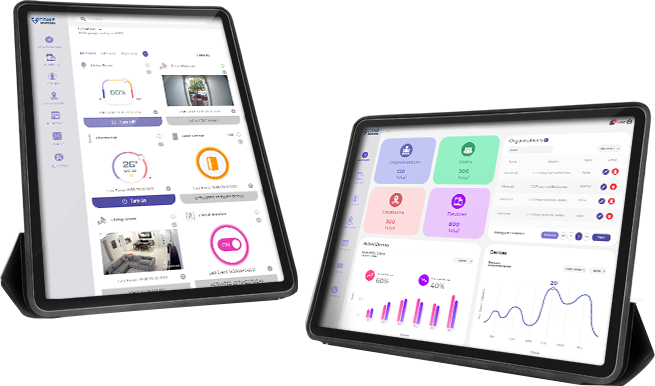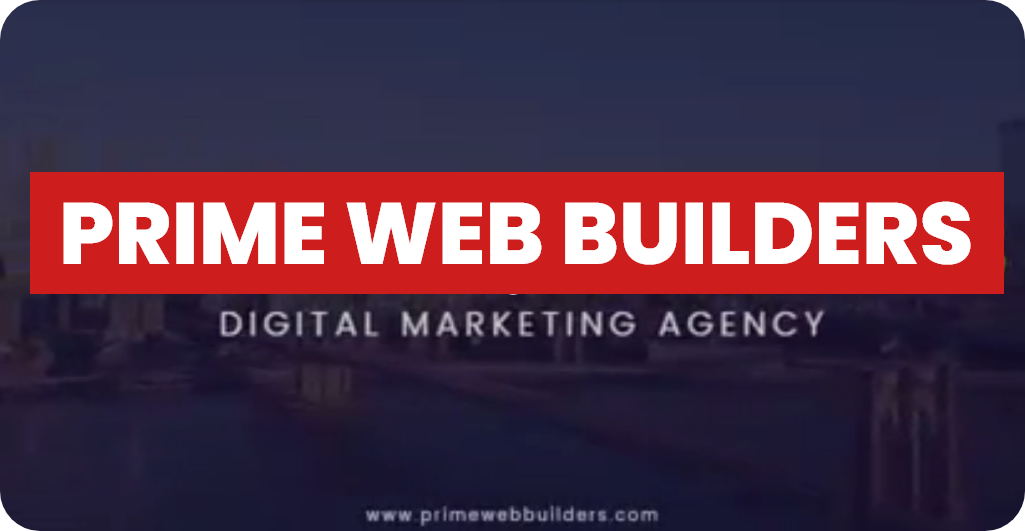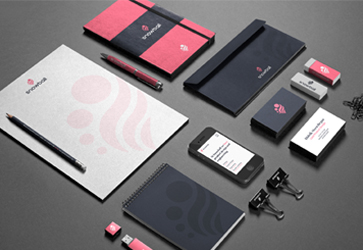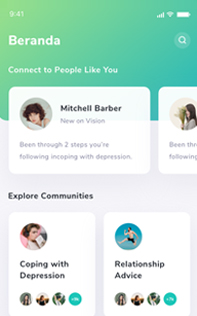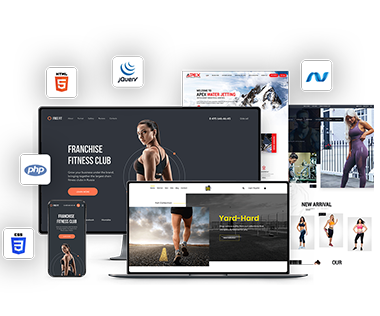TECHNOLOGY WINDOW CONNECTING BUSINESS & PEOPLE
Extended user experience, satisfaction, slashed operational costs, and increased productivity.
B2B PORTAL
Perfect for small and large enterprises, B2B portal exchanges information, products, and services between businesses.
B2C PORTAL
Streamline business to customer interaction with the right people, talent, tools, and technologies. We create experiences no one can beat!
CUSTOMER PORTALS
Improve customer retention, enhance client satisfaction, meet stakeholder expectations, and differentiate yourself from your competition.
ENTERPRISE PORTAL
Our enterprise portals, extranets, user-centric workplaces, and corporate intranets provide a maximum range of business solutions, including rich collaboration capabilities, automated workflows, and built-in analytics.
Portfolio
Recent Work
Pricing
See Our Packages
Process
Testimonials
Reviews of Our Clients
Top 10 Must-Have Features for Your Modern Web Portal in 2024
Web portals are being used by companies more and more in the digital era to simplify processes, improve communication, and increase customer involvement. As a focal point, a well-designed online portal provides users with a single point of entry to features, resources, and information.
Why is a Modern Web Portal Important for Your Business in 2024?
A website has several advantages. It is able to:
- Boost Efficiency: ○ Improving productivity, concentrating resources, and automating processes.
- Enhance Collaboration ○ Help staff, partners, or customers exchange information and communicate seamlessly.
- Improve Customer Service: ○ Give consumers a self-service interface to track orders, make requests, and access information.
- Gain Valuable Insights: ○ Take utilization of analytics to comprehend user behavior and improve the portal for superior outcomes.
- Increase Brand Loyalty: ○ Provide an individualized and easy-to-use experience that encourages client happiness and brand loyalty.
Companies that want to stay ahead of the curve in the ever-growing market for web portal application services need to make sure their portals have the newest features. The following are the top 10 qualities your contemporary online portal needs in 2024:
1. Intuitive User Interface (UI) and User Experience (UX):
First impressions matter. A user-friendly interface is crucial for effective user engagement.
● Clean and Uncluttered Design:
Strive for a clean and uncluttered layout with easy navigation. Utilize clear menus, intuitive icons, and a consistent visual hierarchy to guide users effortlessly.
For example, https://www.office.com/ utilizes a clean interface with a tile-based layout, making it easy for users to find the tools they need quickly.
● Responsive Design:
In today's mobile-first world, a responsive design is essential. Your web portal should seamlessly adapt to different screen sizes (desktop, mobile, tablet), ensuring a smooth user experience across all devices.
2. Robust Search Functionality:
Users expect to find information quickly and efficiently.
● Advanced Search Options:
Implement advanced search functionalities like filters, keywords, and search by category. This allows users to refine their searches and locate the exact information they need swiftly.
For instance, the search bar on https://www.amazon.com/ allows users to filter by category, brand, price range, and other criteria, making product discovery a breeze.
● Search Result Relevance:
Prioritize accurate and relevant search results. The search engine should understand user intent and surface the most pertinent information based on their queries.
3. Secure Login and Data Management:
Building trust with users requires prioritizing data security.
● Multi-Factor Authentication (MFA):
Implement strong login protocols like multi-factor authentication (MFA), which adds an extra layer of security. This could involve a combination of passwords, one-time codes, or fingerprint recognition.
● Data Encryption:
Encrypt sensitive user information, such as credit card details or personal data, to prevent unauthorized access. Utilize industry-standard encryption protocols to safeguard user privacy.
4. Personalized User Experience (UX):
Modern web portals cater to individual user needs and preferences.
● Customization Options:
Let people customize their portal experience. Let users personalize dashboards, configure alert settings, and arrange data as needed.
Facebook https://www.facebook.com/, where users can customize their news feed, change privacy settings, and choose what they view, is a fantastic example.
● Content Recommendations:
Leverage user activity and interests to suggest relevant content. This could include personalized news feeds, targeted product recommendations, or suggested resources based on past interactions.
5. Content Management System (CMS) Integration:
Streamlining content creation, editing, and publishing is key to maintaining an engaging portal.
● Benefits of a User-Friendly CMS:
Even non-technical administrators may generate, modify, and control material on the web portal with a user-friendly CMS. Faster content updates are made possible by this lessening dependence on IT organizations.
For example, content management systems like https://wordpress.com/ provide a user-friendly interface that enables companies to update their web portals without requiring extensive technical experience.
6. Powerful Communication Tools:
Seamless communication between users and departments fosters collaboration and improves efficiency.
● Integrated Messaging:
Implement a secure internal messaging system for direct communication between users or teams. This allows for real-time collaboration and efficient information exchange.
● Discussion Forums and Chat Rooms:
Facilitate user interaction and knowledge sharing through discussion forums and chat rooms. This fosters a sense of community and allows users to collaborate on projects and share expertise.
7. Streamlined Workflow Management:
Modern web portals can automate workflows and simplify task management, leading to increased efficiency.
● Task Management Features:
Assign jobs, establish deadlines, track work, and check completion using the task management tools included within the site. This would guarantee projects stay on course and encourage responsibility.
Offering complete task management features, project management software such as https://asana.com/ effortlessly interacts with web portals.
● Approval Processes:
Automating internal approval processes can simplify approval workflows, significantly reducing turnaround times and streamlining decision-making within your organization.
8. Real-Time Analytics and Reporting:
Gain valuable insights into user behavior and portal effectiveness with robust analytics tools.
● Data Visualization Tools:
Using data visualization tools, you can transform complicated data sets into understandable and useful dashboards. This makes trending patterns of user activity and areas for development easily identifiable.
Numerous data visualization tools are available on platforms like https://www.google.com/analytics/, so companies can learn a great deal from their web portal usage statistics.
● Customization Options:
Allow users to generate reports tailored to their specific needs. This empowers stakeholders to analyze data relevant to their roles and responsibilities within the organization.
9. Scalability and Integration Capabilities:
A web portal should be able to grow and adapt to your future business needs.
● Integration with Existing Systems:
Ensure seamless integration with your existing software and databases. This allows for data exchange between the portal and other business systems, eliminating the need for manual data entry and improving overall efficiency.
Web portal application services USA can help businesses develop portals that integrate seamlessly with their existing software infrastructure.
● Scalable Architecture:
Choose a scalable architecture that can handle increasing user traffic and data volume. This will ensure that your web portal can grow alongside your business without encountering performance issues.
10. Mobile-First Design:
The rise of mobile browsing necessitates a mobile-first design approach.
● Responsive Design:
As said before, a responsive design is necessary. Your website should be easily adjustable to fit various screen sizes so that users of smartphones and tablets may enjoy the best possible experience. This meets the demands of the contemporary web portal application services USA for the mobile workforce. Building mobile-friendly web portals that work on a range of devices is the specialty of many USA web portal application firms.
Conclusion
With these ten elements included in your web portal, you can build a contemporary, intuitive platform that improves communication, expedites processes, and promotes teamwork inside your company. This can then result in higher output, happier customers, and a big competitive edge.
Partnering with a respectable web portal application company in the USA is strongly advised if you are thinking about creating a web portal for your company. These businesses are qualified and experienced enough to provide a bespoke web portal solution that satisfies your particular requirements and goals.
let's Get Started
